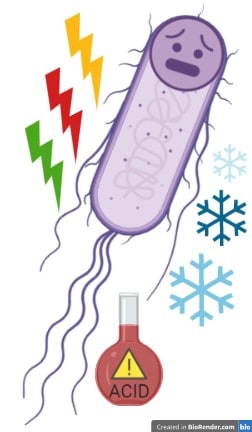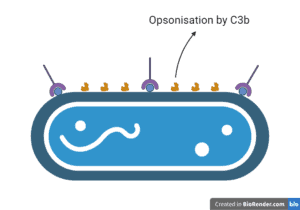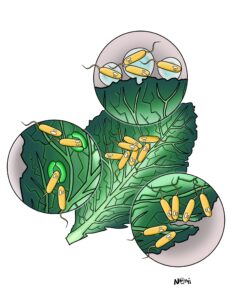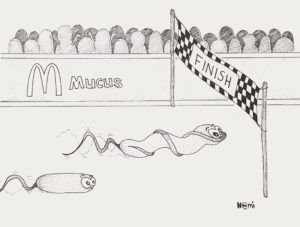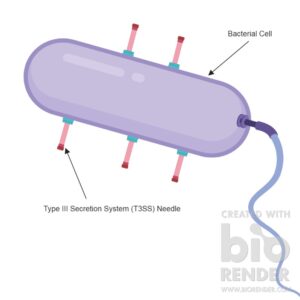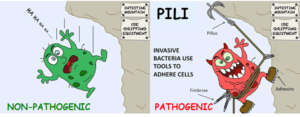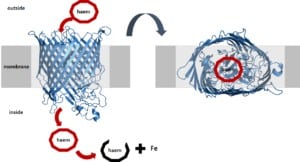Hi, my name is Rachel (@RMBurckhardt) and I am a big microbe lover. I recently finished my PhD at the University of Georgia studying how bacteria respond to stress. Here I’ll explain a little about how the bacterium Salmonella is able to deal with stress when arriving in the human body and how that can help them make us sick.
What does stress mean for bacteria?
For humans, stress can come from juggling work, family, exercise, entertainment, and whatever else life throws at us (like a world-wide pandemic!). Bacteria also can get stressed; however, they experience and react to stress differently than us. Salmonella enterica is a great example of a bacterium that has many ways to deal with different stress in its life.
You’ve probably heard of Salmonella enterica because it can cause food poisoning. While there are many different strains of this bacterium, I’ll only be discussing the ones that lead to food poisoning and I’ll refer to it as Salmonella in this post. Unfortunately, there are about 1.3 million food poisoning infections a year from Salmonella.
About the pathogen Salmonella
Salmonella naturally lives in the guts of chickens, so handling chickens or eating undercooked or raw eggs could put you at risk of getting sick. That’s why you’re not supposed to eat raw cookie dough (even though it’s so good). Good hand hygiene and cooking meat and foods thoroughly reduce the risk of getting sick.
However, if by any chance a Salmonella bacterium makes its way into our bodies, it travels to the small intestine. Here, it will start to reproduce, leading to diarrhea and stomach cramps associated with food poisoning.
But if you think about it, it has to be challenging for Salmonella to live in all those different environments, from chicken guts to the inside of eggs to human stomachs and intestines. Each of these environments has a different temperature, pH, and different nutrients. And the change of just one of these conditions is “stress” for the bacterium. That’s where having the ability to deal with stress comes in handy for Salmonella.
Let’s look at each of these challenges for Salmonella bacteria and how they deal with stress.
How Salmonella handles temperature stress
Salmonella likes to grow in the warm environments of chicken and human guts.
And like humans, bacteria also react to being too cold. This can happen when Salmonella lives in a chicken egg and a chicken lays this egg. All of a sudden, Salmonella lives in outside temperatures. But instead of bundling up with some hot cocoa and a blanket, Salmonella makes proteins to protect itself.
When bacteria are too cold, the genetic information (DNA, RNA) stiffens and adopts a shape that’s hard for the cell to use. This is why the cell makes special proteins that protect the shape of DNA at colder temperatures.
Thus, the cell ‘blankets’ its genetic information to protect it and use it properly.
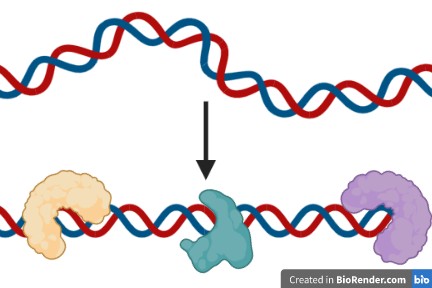
How Salmonella copes with acid stress
After coping with changing temperatures, Salmonella continues its journey to the human intestine. We consume Salmonella bacteria through contaminated food (like that raw cookie dough). Then they make their way down to the human stomach.
But our stomachs are very acidic. This is to help us break down food and kill pathogens. In acidic environments, proteins start to misfold and get destroyed, making them useless to the cell.
However, Salmonella and other pathogens know how to cope with this acidic attack. They produce so-called chaperones. These are special proteins that protect other proteins from misfolding. This keeps all other proteins active and thus the cell alive.
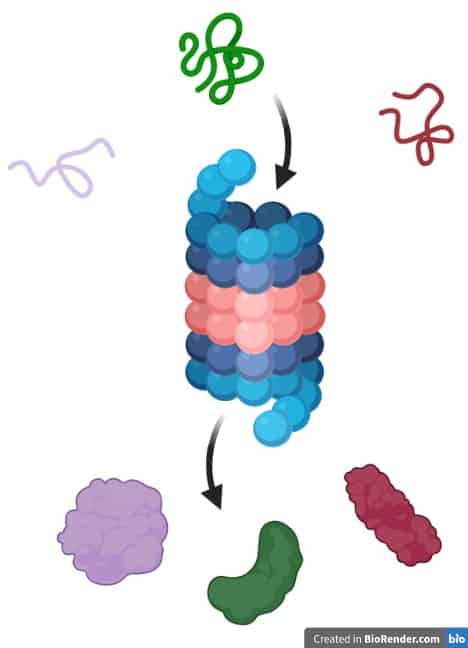
How Salmonella saves energy when food is limited
Now that Salmonella has survived the highly acidic stomach, it enters the intestines where it can find food and grow. Lots of bacteria live in our guts and all compete for the same amount of food.
For cells to grow, they need energy that comes from food. When food sources are limited, Salmonella cells will conserve energy by ‘turning off’ proteins that consume energy.
But why not just get rid of that protein if the cell does not need it anymore? The problem is, making proteins takes energy. If the cell needs the protein it just trashed in the future, the cell must invest more energy into making that protein again. By turning the protein off, the protein is not destroyed and can be used again later when conditions are better.
It is similar to changing from a green light to a red light at a traffic light. The red light halts cars from moving at specific times but does not destroy the car. Once traffic conditions favor that direction, the traffic light turns green and the cars can respond quickly and move through the intersection.
Similarly, Salmonella turns off its proteins in such a way that it can later remove the modification and restore the activity of the protein. Like this, Salmonella can respond quickly and turn on the protein when food becomes available. Once more food becomes available, Salmonella settles into the gut by eating, growing, and reproducing.
Unfortunately, as Salmonella gets comfortable in its new home, we become uncomfortable with fever, stomach aches, and diarrhoea. Now that sounds stressful!
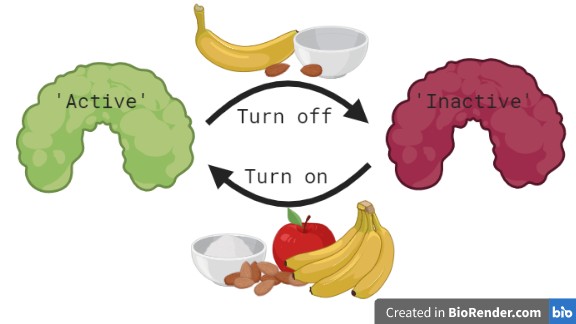
Salmonella knows how to deal with stress
All these mechanisms of stress management allow Salmonella to thrive in a wide variety of environments. From chickens to humans, the road to pathogenesis is wrought with stressful situations. And lucky for Salmonella, it knows just how to deal with each of these situations of stress.
The ability to respond to stressful situations is common to bacteria, and each bacterium possesses its own set of proteins and pathways to handle stress and even aid in bacterial virulence.
So just like us, bacteria have to handle a lot of stress in their lives. But the more we learn about how pathogens like Salmonella deal with stress, the better we can fight them!
Take away messages from this week’s article
- Bacteria encounter many stresses in the environment
- They have various pathways to respond to different types of stress
- The ability to deal with varied environments and stress allows pathogens like Salmonella greater virulence and resilience

